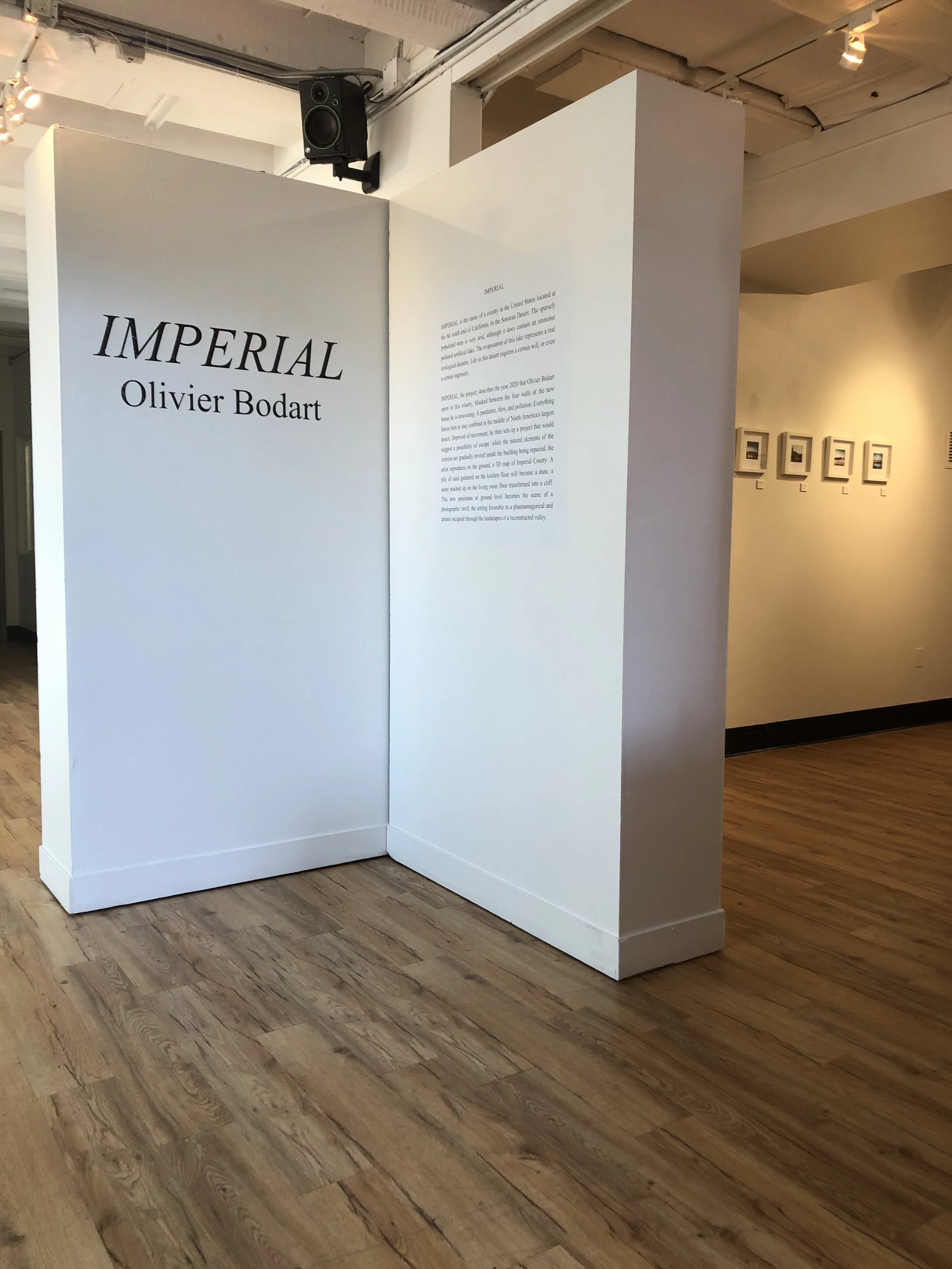Risk Areas, Shadow box sculptures & photographs, Evanston Art Center, Chicago, USA, April-May 2022
Between Land and Sea, public sculpture, Glenalade Cultural Center, Prince-Edward-Island, Canada, June 2022
Imperial, Shadow box sculptures & photographs, The Guild Gallery, Charlottetown, Canada, Aug-Sept 2021
Risk Areas, Photographs, Rare Nest Gallery, Chicago, USA, May-June 2020
Beating Earth, Paintings and engravings, L’Estuaire Gallery, Paris, France, 2010
L’Absente, Printmaking, Les Cordelières Gallery, Paris, 2008
Moving-Loop Project, Etching, Bartok Gallery, Paris, France, 2007
Across Land Project, Paintings, Chapelle Saint-Vincent, Saint-Valery-sur-Somme, France, 2004
Small Noises Project, Paintings, Micro-Gigantic Gallery, Brussel, Belgium, 2002































